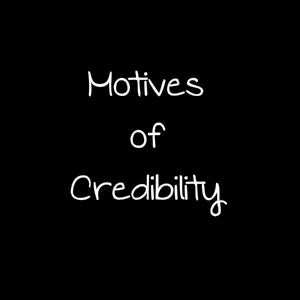
-by Casey Chalk
There are a lot of reasons to believe that the Catholic Church is what it says it is. If you already believe in the Bible, there’s the evidence that the institutional church compiled and defined the contents of the biblical canon. If you believe in Jesus, there’s the evidence that He gave His apostles authority to act on His behalf, and those apostles in turn gave that authority to their episcopal successors. And if you believe in God, there’s the evidence that the best arguments for His existence, and the most coherent brand of theism, are those presented by the Church.
Yet there are even more reasons than these, ones that serve as external proofs for divine revelation. The Church calls these “motives of credibility,” which are discussed in the Catechism of the Catholic Church:
What moves us to believe is not the fact that revealed truths appear as true and intelligible in the light of our natural reason: we believe “because of the authority of God Himself Who reveals them, who can neither deceive nor be deceived.” So “that the submission of our faith might nevertheless be in accordance with reason, God willed that external proofs of His Revelation should be joined to the internal helps of the Holy Spirit.” Thus the miracles of Christ and the saints, prophecies, the Church’s growth and holiness, and her fruitfulness and stability “are the most certain signs of divine Revelation, adapted to the intelligence of all”; they are “motives of credibility” (motiva credibilitatis), which show that the assent of faith is “by no means a blind impulse of the mind (156).
The motives of credibility provide an effective means to counter the (false) Protestant claim that Catholics engage in circular reasoning. The Protestant argument, in brief, goes like this: any appeal to an ultimate authority is circular, because arguments in favor of that ultimate authority will originate from that same ultimate authority. For Protestants, that ultimate authority is Holy Scripture; for Catholics, it’s the Magisterium.
The problem with this argument is that the Catholic Church does not argue that people should believe the Church’s authority simply because she asserts it in various magisterial documents. Rather, the Church appeals to the motives of credibility as external proofs—accessible to human reason—to validate her credibility.
The first of these motives of credibility is miracles: those of Christ and the saints. The miracles of Christ, of course, are discussed at great length in the New Testament, which, even if we grant to our interlocutors—for the sake of debate—might not be inspired and infallible, at the very least present a considerable historical case for their veracity. When we add the testimony from extra-biblical records such as the writings of Clement of Rome, Ignatius of Antioch, Josephus, and Celsus, the veracity of these miraculous incidents is even stronger.
Then there are the many miracles attested to Catholic saints over two thousand years of Church history. When I was a Protestant, I dismissed these miracles, numbered at this point in the thousands, as most likely superstitious silliness. Did St. Francis of Assisi really have the stigmata? Did St. Martin de Porres really bilocate? Does St. Januarius’s blood really liquefy on his feast day? The stuff just sounded absurd, something only a naïf or fool would believe.
Yet when I was investigating Catholicism, I studied the more famous Marian apparitions: Guadalupe, Lourdes, and Fatima. What I discovered was a remarkable amount of credible testimony that Mary had indeed appeared at these three locations, and that miracles were performed. All three of these cases also featured skeptical Catholics, including clerics! Several years ago, I had the privilege of visiting the shrine of Our Lady of Guadalupe in Mexico City, and I saw the tilma of St. Juan Diego myself, with its image of Mary that has survived a bomb blast. The more you study such miracles, the more you realize that these are far from fabrications.
Prophecies, like miracles, abound in Scripture. Theologian Lawrence Feingold in his book Faith Comes from What Is Heard notes that from the patriarch Abraham (ca. 2000 B.C.) to the book of Wisdom (c. first century B.C.), there are some fifty prophetic texts that “allude to a great diversity of aspects of the Messiah’s life and work.” These characteristics validate Christ’s claim to be the Messiah, the true representative of God. By extension, fulfilled prophecies also confirm anything Christ did in his role as a divine authority, such as establish an institutional, visible Church.
Another motive of credibility is the Church’s growth over two millennia, a remarkable achievement that spans every continent inhabited by man, reaching almost every tribe and nation on the planet. I have attended Mass celebrated by African priests, gone to confession in Spanish, and witnessed the baptism of two of my children by Thai Redemptorists. The Church, in a manner unparalleled among religious institutions, is truly universal. Its holiness, in turn, is visible in the remarkable sanctity of its saints.
Yes, it’s true: one may find many holy people in other religious traditions. But the sanctity of people such as St. Teresa of Avila, St. Philip Neri, St. Ignatius of Loyola, St. Thérèse of Lisieux, St. Bernadette, and St. Maximilian Kolbe is exceptional. There are thousands of such Catholic saints with remarkable stories of holiness.
Finally, there is the fruitfulness and stability of the Catholic Church. Her fruitfulness is identified in her many faithful members found at thousands of parishes across the planet, a phenomenon of growth that has occurred despite often brutal persecution. It is also found in the many manifestations of the Church’s devotion to God, be it through theology, art, music, architecture, or charitable institutions, all of which have blessed millions of Catholics and non-Catholics alike. In America alone, Catholic schools, food kitchens, shelters, hospitals, crisis pregnancy centers, and many other similar organizations dot the landscape.
Stability might seem at first blush to be a mark against the Church. Isn’t this the institution that was in French exile from Rome for seventy years, the one that at one point supposedly had three popes, and is rocked by great turmoil even now? Yet the Church has survived these crises, and many more besides, enduring incredible persecution and internal dissension over two thousand years. G.K. Chesterton once noted that only an institution that enjoyed divine approbation could endure the trials and self-inflicted wounds the Catholic Church has suffered. And yet, despite not only the sins of the world, but the sins of many of its members, the Church, struggling but unified, has prevailed into the twenty-first century, the oldest continuing institution today.
These are the motives of credibility, accessible to human reason, and proving that an act of faith in the Church’s divine origination is reasonable and defensible . . . and certainly not circular.
Love & truth,
Matthew

